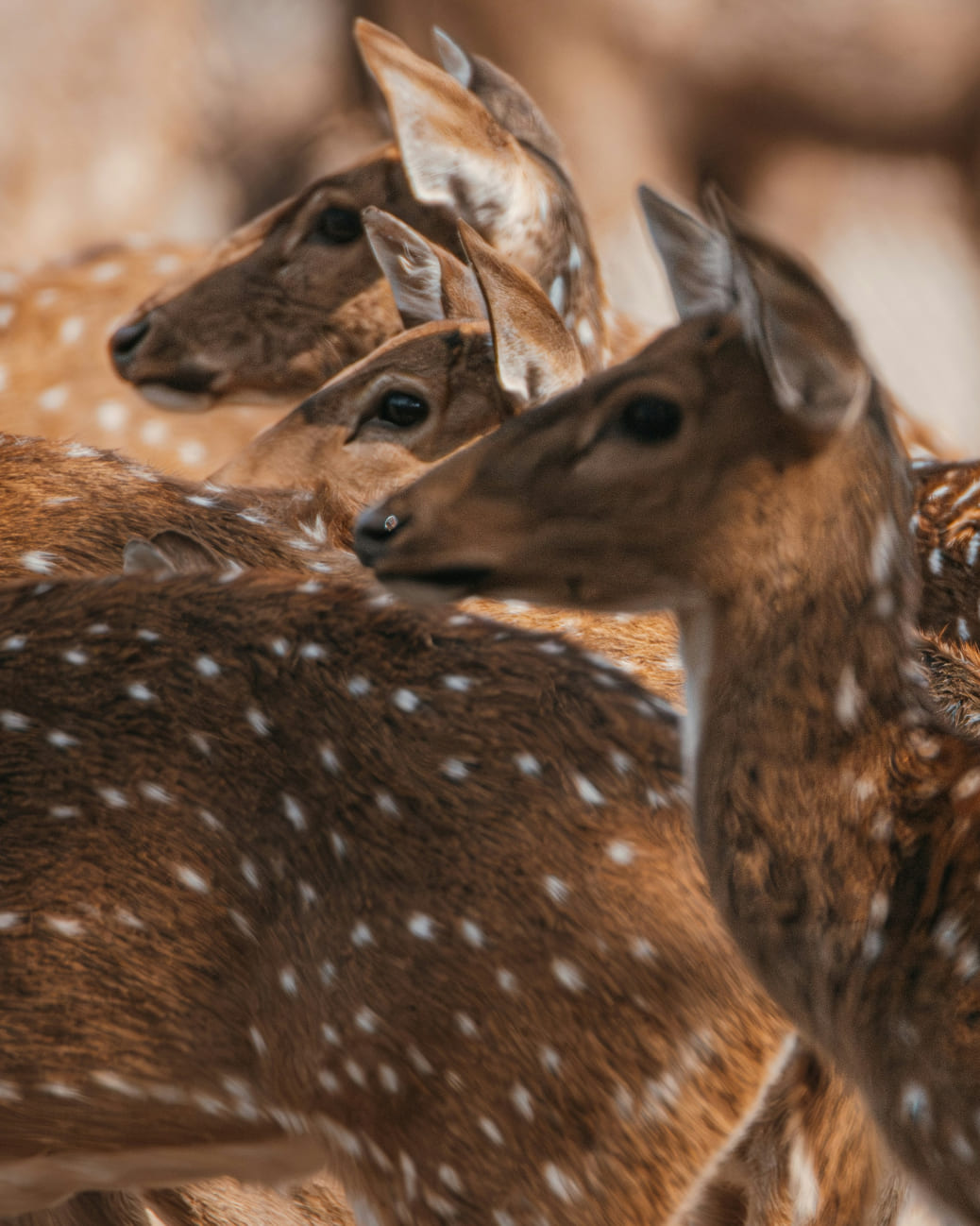
The axis deer (Axis axis), also known as the chital, is one of the most beautiful and agile inhabitants of the wild. Known for its reddish coat dotted with white spots, the axis deer resembles a living painting as it moves gracefully through the grasslands. Native to the Indian subcontinent, these deer have adapted to a variety of habitats, including open savannas where they live in large herds for protection.
Axis deer are herbivores, grazing on a diet of grasses, leaves, and fruits. Their keen sense of smell and excellent hearing help them detect predators like tigers and leopards. When threatened, axis deer communicate danger with sharp alarm calls, often saving their herd from potential attacks. These calls are also a signal for predators that they have been spotted, often discouraging an ambush.
Herds of axis deer typically consist of females, their fawns, and a few dominant males, while younger males form bachelor groups. During mating season, males compete for dominance by locking antlers in fierce but graceful battles. The victorious males earn the right to mate, passing on their genes to the next generation.
Axis deer play a vital role in their ecosystem by shaping vegetation and providing a food source for predators. However, they face threats from habitat loss and hunting. Conservation efforts aim to protect their habitats and maintain the balance of the ecosystems they inhabit.